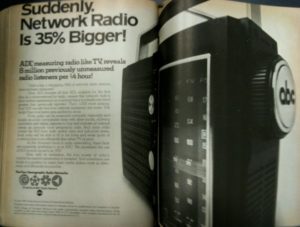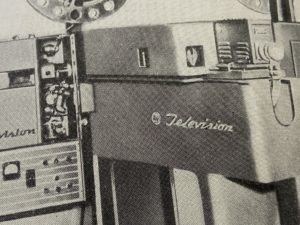What to do when you have a good brand, but then the market changes and technology changes, and the old brand can no longer exist?
You do what the New York radio station WABC 77 AM does. It compromises.
WABC 77 has had many lives. It was first the flagship station of the NBC Blue radio network, the network that later evolved into the American Broadcasting Company. It turned into the ABC-owned station Musicradio 77, the most powerful top 40 station in the U.S. In 1982, and with competition from FM and MTV, it changed formats and became the nation’s most powerful talker, its current lineup includes Rush Limbaugh, Sean Hannity, Bob Grant, Laura Ingraham, Mark Levin, Curtis Sliwa and Don Imus.
But there was lingering sadness from fans of the music station when the format switched to talk. The shutdown began to be referred to as “the day the music died.” Not that listeners didn’t like the new WABC as a talk station. It’s just that they missed the OLD station. Fans put up tribute pages on the Internet. They lobbied. They talked. They collected old jingles, photographs, radio playlists, interviews, memorabilia and logos. And then, something amazing happened. The station decided that they would humor those folks who wanted the old station back. And they brought the format back.
No, they didn’t change the format back all the way. That would have been foolish, as the new WABC is quite popular. Instead, on December 2005, the station took a dead time of the week, Saturday night, and gave it over to veteran dj Mark Simone. Each Saturday from 6 to 10 p.m., Simone hosts The Oldies Show on WABC. It sounds just like the WABC of old.
The show is just perfect. Simone plays old station airchecks, bumpers and station ids. He plays the old WABC jingles. He talks about old commercials, New York history, pop culture and music. It is a great nostalgia trip. It’s not edgy at all; kind of simple fun.
It has many benefits for WABC. First, it gives WABC something fresh in a part of the programming schedule that in other markets is usually given over to infomercials for snake oil and financial “advisors”. Secondly, the show acts as a sort of goodwill embassy for the station. Famous folk check in for an interview, and keep WABC in the cultural swim. Thirdly, it takes the edge off the programming. If the station were just about right wing politics, it would be a big bore to many. But since it offers up shows for lots of different types of audiences, it builds an audience for the station. And lastly, its concern for its own history and heritage sends a subtle message to the larger WABC community. WABC changes with the times, but it doesn’t forget. And however times may change, WABC will adapt, and will always be around.
But how is this a lesson to other companies? WABC realized that changing a brand to fit with the times is not mutually exclusive with keeping an old brand alive. It found a way to accommodate the old while keeping the new. It turned the old “brand” into a niche brand, and kept it around. Many companies let pride get in the way, and choose not to bring back an old brand. That is a mistake.
Cheers to Mark Simone and the management of WABC. Listen in this Saturday night. If you are on the East Coast, you can often hear the station’s 50,000 watts. Or, it broadcasts on the Internet.
It seems that other AM radio stations could utilize this Saturday Night Oldies approach; perhaps only WABC and WSM, which still broadcasts the Opry, take this approach. It could be ideal for many AM stations across the country, particularly 50,000 watt AM stations like WQEW, KDKA, WRVA, WLW, WJR, WCCO and KMOX. These historic stations could run some heritage programming on weekends with music, old formats and retired staff, yet stick with their respective formats during the week.
Any ideas about what stations could take this approach?










Great show. Great article!
Boy, what a great idea–simple, yet powerful in its forthrightness.
It makes you wonder if the NBC Radio Network still existed if it could revive the venerable old weekend program Monitor to once again fill the weekend hours with something worth listening to? Or if some other network could revive the show?
That magazine of the air would be a welcome complement to a station that featured talk during the week, but wanted to offer something completly different on weekends. After all–to borrow one of Monitor’s catch phrases—weekends are different!
Tom Frieling
tfrielin@uga.edu
Boy, what a great idea–simple, yet powerful in its forthrightness.
It makes you wonder if the NBC Radio Network still existed if it could revive the venerable old weekend program Monitor to once again fill the weekend hours with something worth listening to? Or if some other network could revive the show?
Tom Frieling
tfrielin@uga.edu
That magazine of the air would be a welcome complement to a station that featured talk during the week, but wanted to offer something completly different on weekends. After all–to borrow one of Monitor’s catch phrases—weekends are different!
Frankie Valli was a guest on Saturday Night Oldies. The others, Jerry Seinfeld, Regis Philbin, John McCain and Jay Leno, however, were guests on Mark Simone’s Saturday morning program on WABC.
a great show.